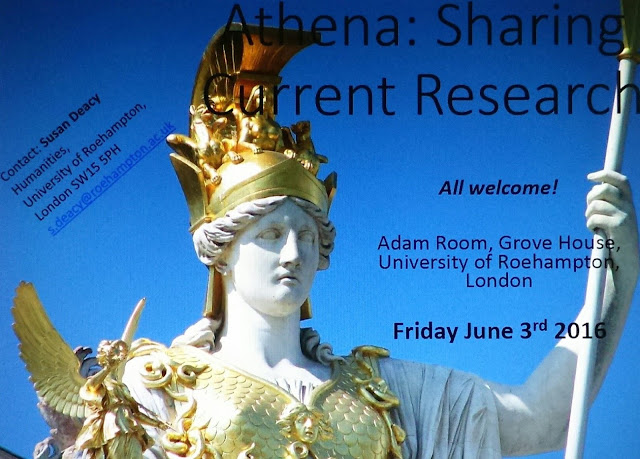I'm pleased, now, to present the next abstract for the conference on 3 June - this time from two scholars: Alessandra
Abbattista of the University of Roehampton, London and Fabio Lo Piparo of Ca’ Foscari University
of Venice
The two folds of
Athena’s garment: military and maternal aegis in Euripides’ Ion
The
paper aims to investigate the gendered meaning of the aegis of Athena in and
around Euripides’ Ion. With particular attention to the passages related
to the aegis, the analysis will focus on the contradictory treatment of this
garment, between danger and protection, in the text. The Euripidean version of
the origin of the aegis from the Gorgon, the monster that was killed by Athena
during the Battle of the Giants, portrays the figure of the goddess as promachos,
the androgynous mistress of war. This aspect is embodied by Creusa in her
failed attempt to kill her son with the poisonous blood scattered from the
Gorgon’s body, beheaded and deprived of its skin. Furthermore, the snaky border
and the gorgoneion in Ion’s swaddling cloth woven by Creusa suggest an
accurate reproduction of its model, the real aegis. The use of the woven aegis
in the exposition of Ion merges the motifs of the birth and the delivery of
Erichthonius to the daughters of Cecrops by his foster mother Athena, a moment
carefully replicated and ritualised by Creusa. This adds nurturing and
child-caring features to the aegis and therefore to the two figures who bear
it. Just as Athena, the tragic heroine appears both male/promachos and
female/kourotrophos. References from Homer to lexicographers, as well as
iconographic depictions on Attic vases, will demonstrate the gender conflation
beyond the aegis in the Euripidean tragedy.
